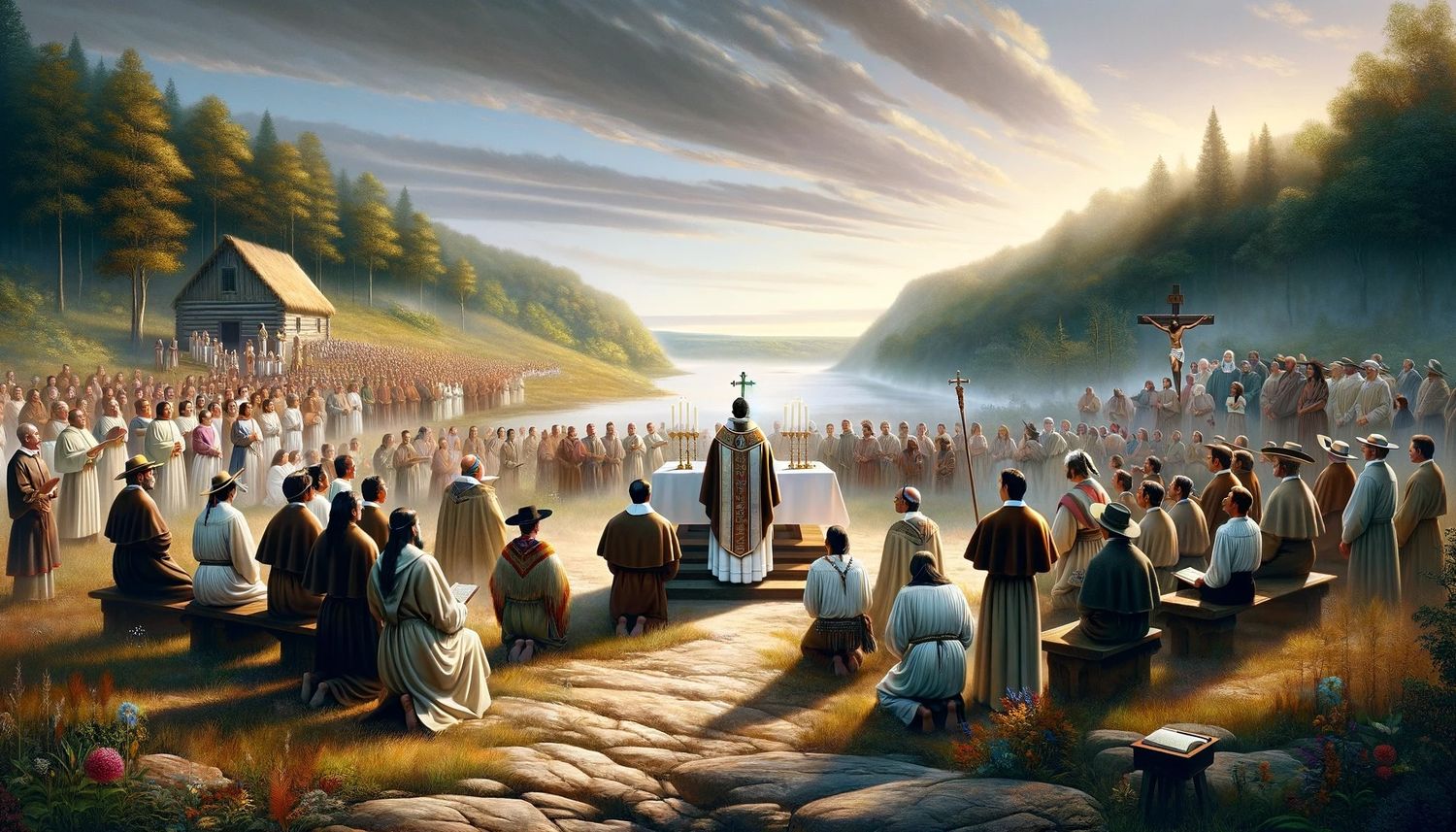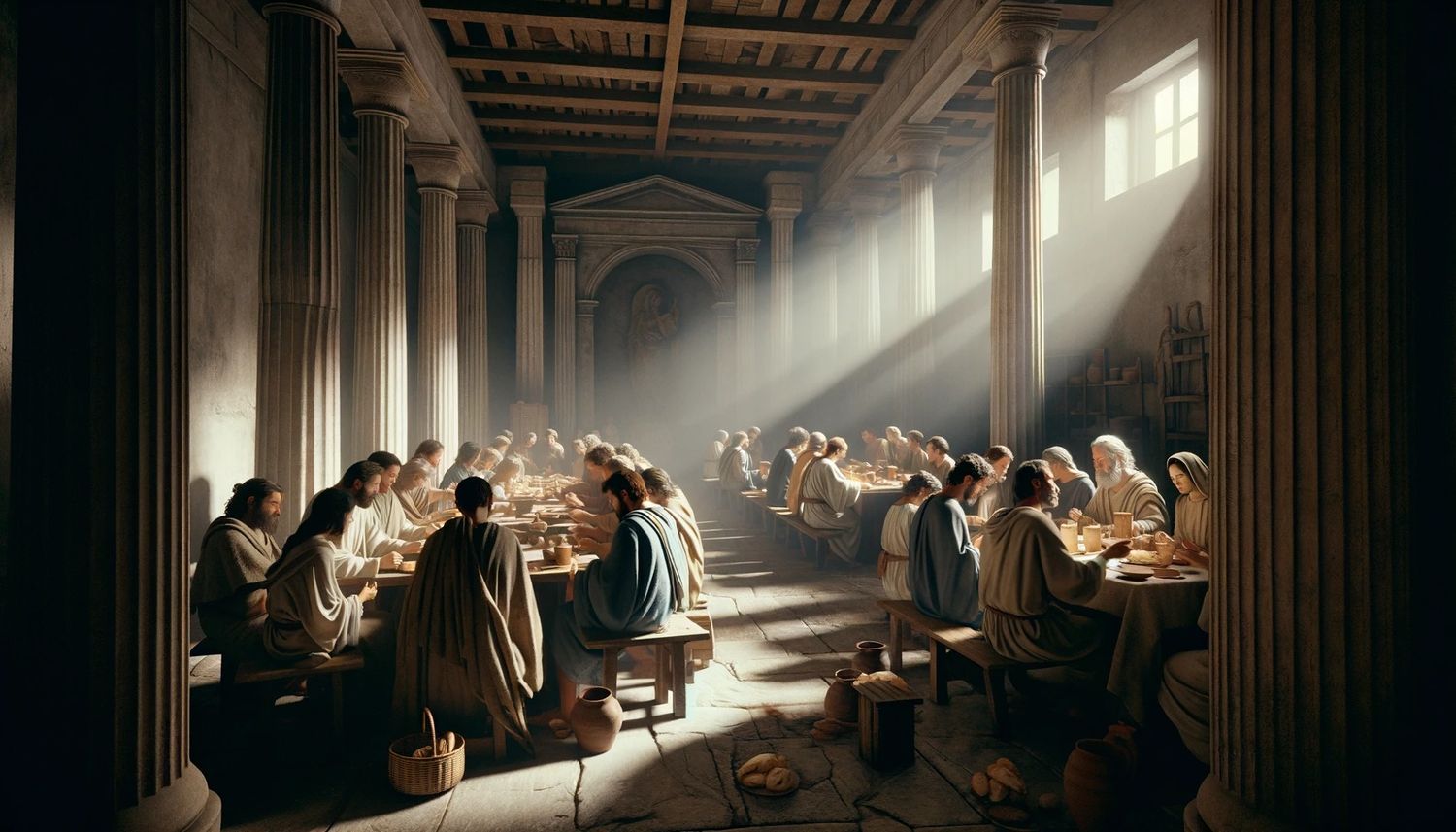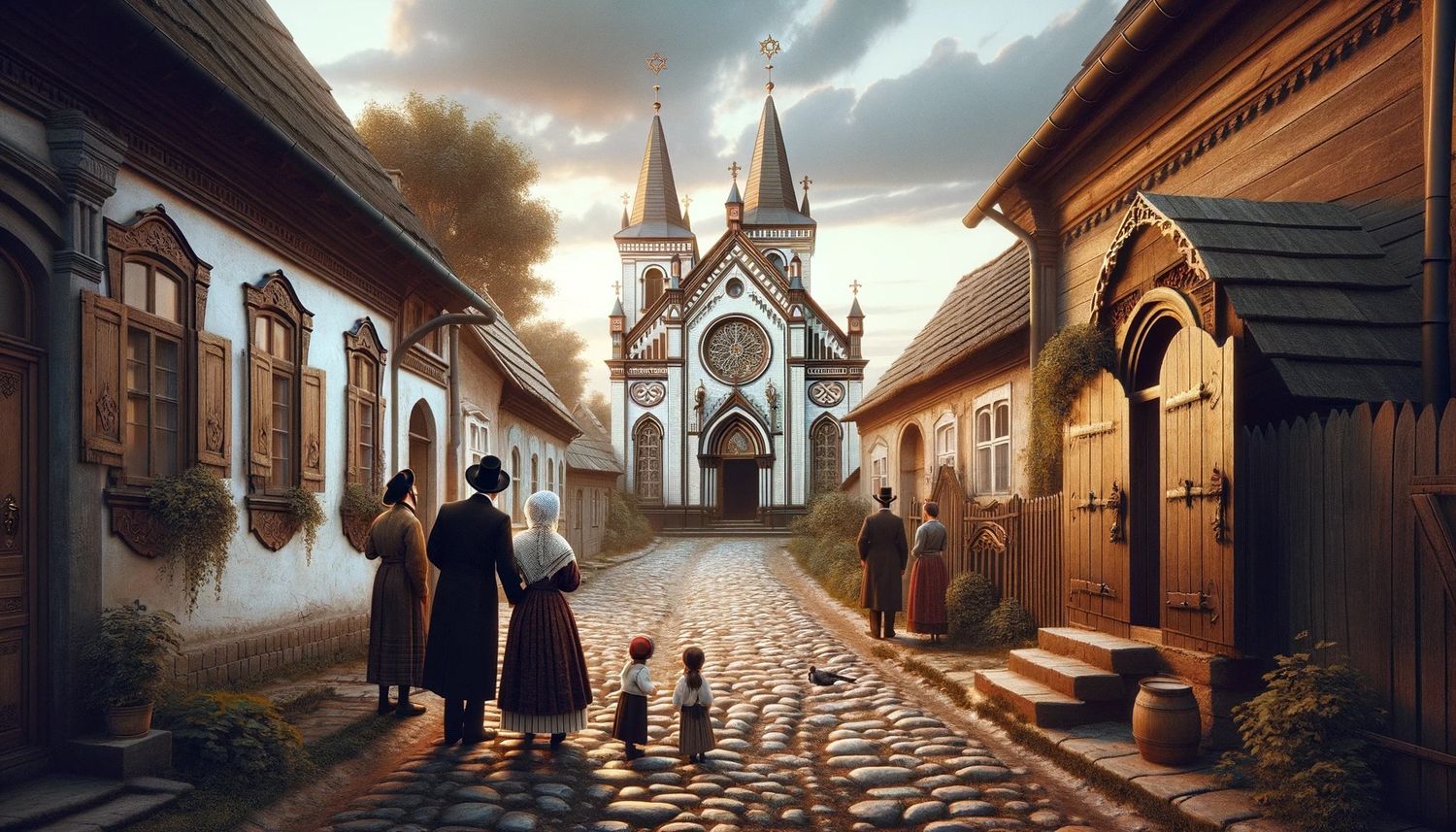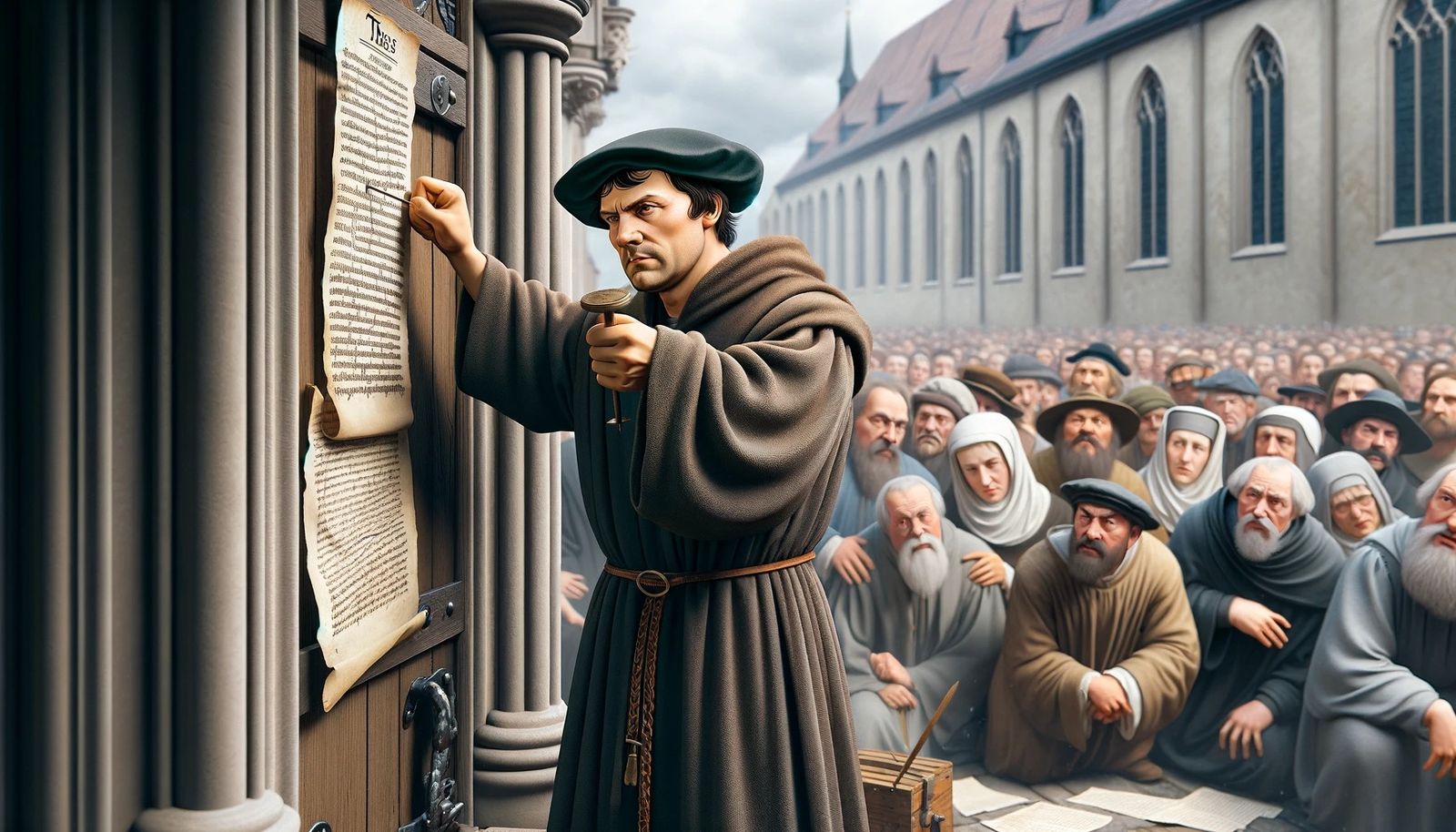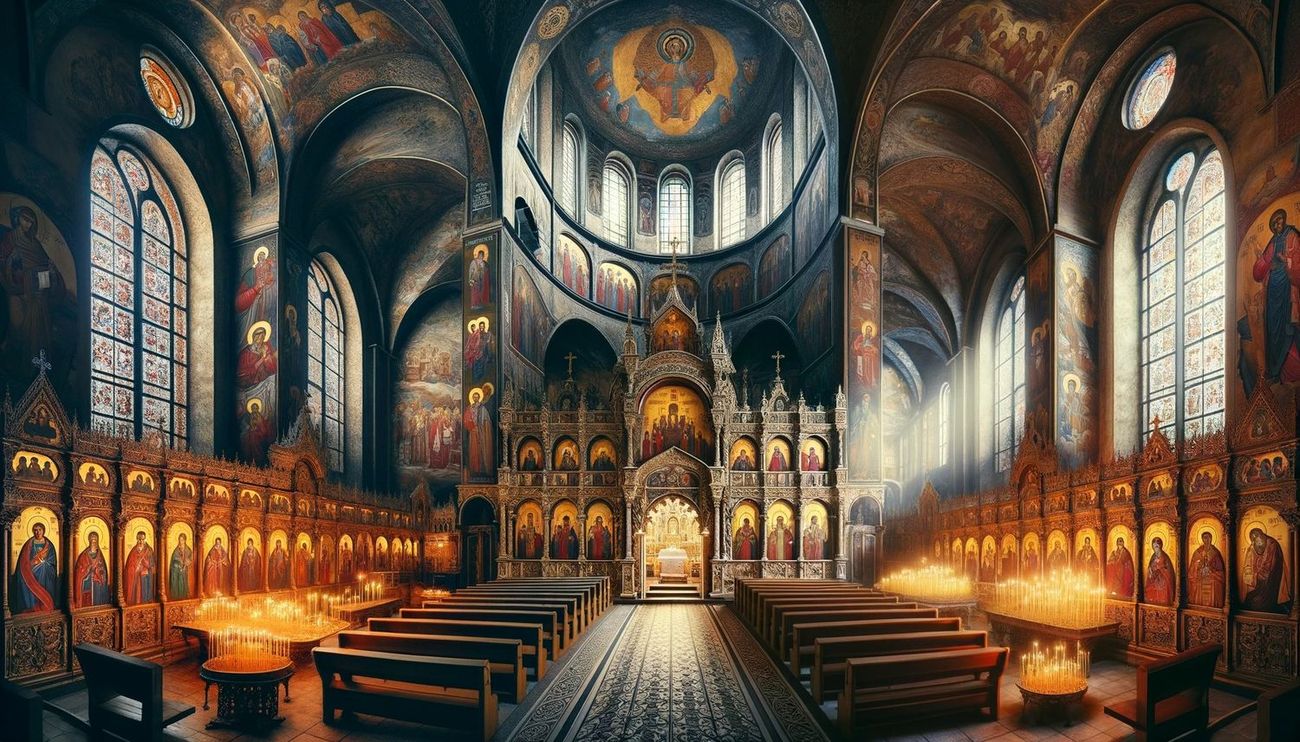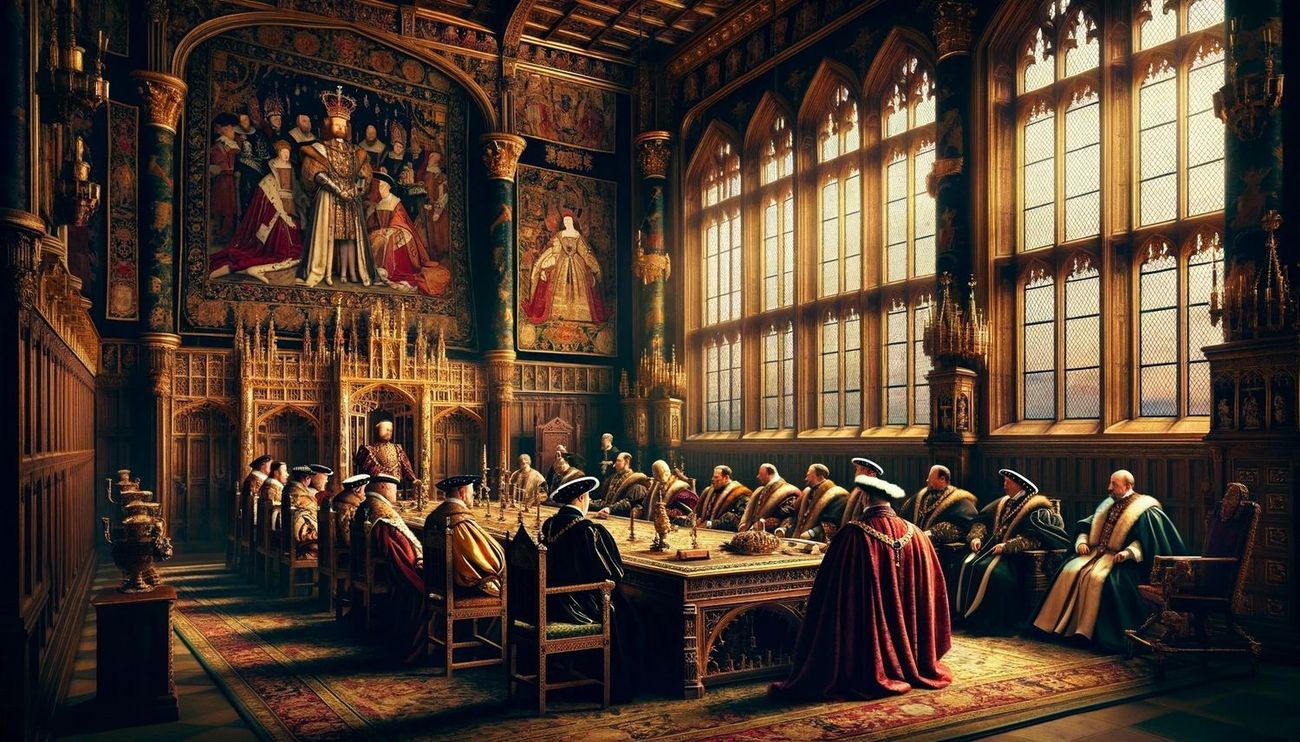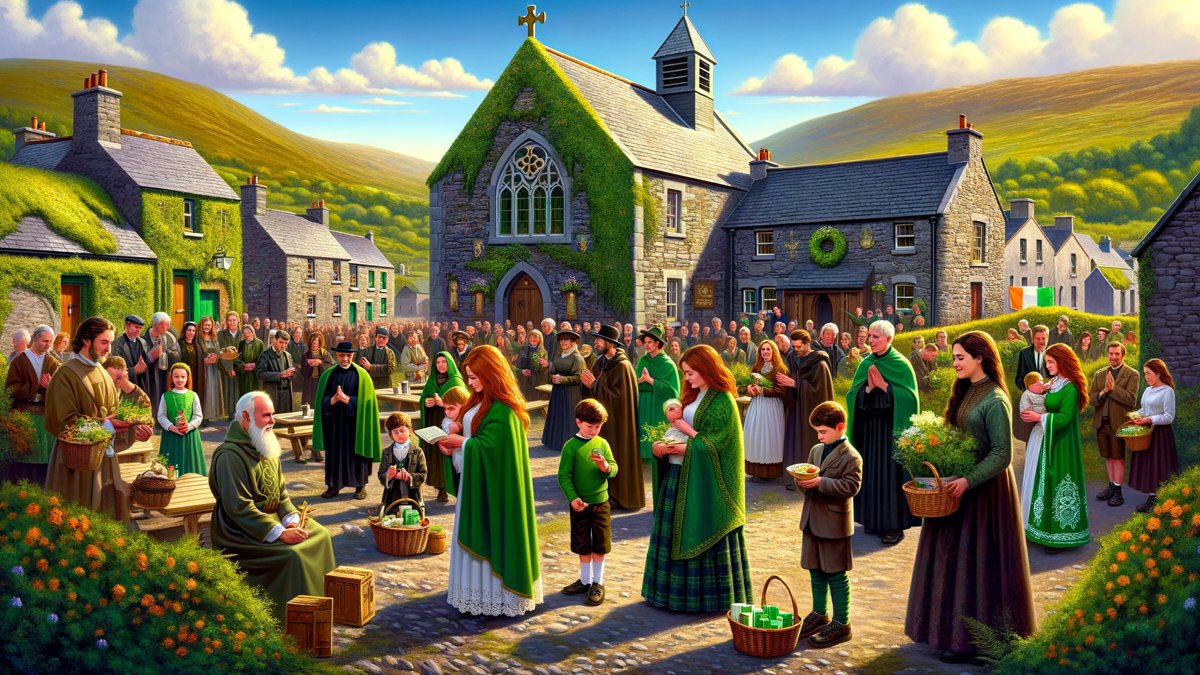Home>Theology and Spirituality>When Did Catholicism Split From Eastern Orthodoxy
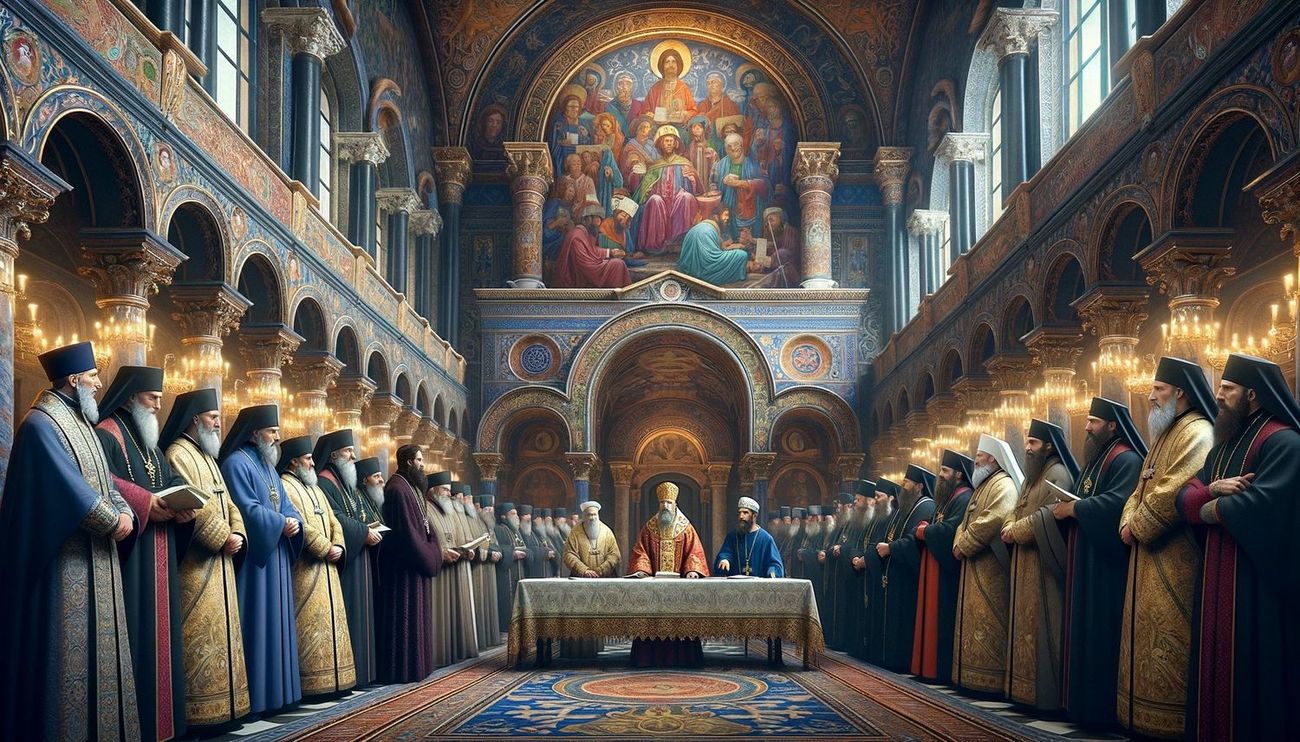

Theology and Spirituality
When Did Catholicism Split From Eastern Orthodoxy
Published: February 17, 2024
Peter Smith, Editorial Director at Christian.net, combines deep insights into faith, politics, and culture to lead content creation that resonates widely. Awarded for his contributions to religious discourse, he previously headed a major organization for religious communicators, enhancing dialogue on faith's societal impacts.
Discover the historical and theological factors that led to the split between Catholicism and Eastern Orthodoxy. Explore the differences and implications for theology and spirituality.
(Many of the links in this article redirect to a specific reviewed product. Your purchase of these products through affiliate links helps to generate commission for Christian.net, at no extra cost. Learn more)
Table of Contents
Introduction
The split between Catholicism and Eastern Orthodoxy is a pivotal event in the history of Christianity, with far-reaching implications for theology, culture, and geopolitics. Understanding the origins and implications of this schism requires delving into the complex interplay of religious, political, and cultural factors that shaped the development of these two major branches of Christianity.
The division between Catholicism and Eastern Orthodoxy has its roots in the early centuries of Christianity, as the Church expanded and diversified across the Roman Empire and beyond. Over time, theological differences, linguistic distinctions, and divergent cultural influences contributed to the gradual estrangement between the Western and Eastern Christian communities.
This schism, often referred to as the Great Schism of 1054, marked a definitive rupture between the Latin Church centered in Rome and the Greek-speaking churches of the Byzantine East. The consequences of this split reverberated across Europe and the Mediterranean world, shaping the religious landscape and influencing the course of history for centuries to come.
Exploring the historical context and the multifaceted reasons behind the separation of Catholicism and Eastern Orthodoxy provides valuable insights into the complexities of religious identity, doctrinal disputes, and the enduring quest for unity within the Christian faith. By examining the theological, political, and cultural dimensions of this schism, we can gain a deeper appreciation for the rich tapestry of beliefs and practices that have defined these two distinct branches of Christianity.
The Great Schism of 1054
The Great Schism of 1054 stands as a defining moment in the history of Christianity, marking the formal split between the Western (Latin) and Eastern (Greek) branches of the Church. The schism culminated in the mutual excommunication of the Pope of Rome, Leo IX, and the Patriarch of Constantinople, Michael Cerularius. This rupture had been long in the making, with tensions simmering for centuries over theological, cultural, and ecclesiastical differences.
At the heart of the schism were theological disputes and divergent interpretations of Christian doctrine. One of the primary points of contention was the nature of the Holy Spirit's procession. The Western Church, centered in Rome, professed the "filioque" clause, asserting that the Holy Spirit proceeded from both the Father and the Son. In contrast, the Eastern Church, based in Constantinople, adhered to the original Nicene Creed, which stated that the Holy Spirit proceeded from the Father alone. This theological discrepancy became a flashpoint, symbolizing deeper theological and cultural disparities between the two branches of Christianity.
The growing estrangement between the Latin and Greek-speaking Christians was exacerbated by linguistic and cultural differences. The use of Latin in the West and Greek in the East contributed to a sense of linguistic and cultural isolation, further widening the divide between the two Christian traditions. Additionally, the political and ecclesiastical authority wielded by the Pope in the West and the Patriarch in the East led to competing claims of primacy and jurisdiction, fueling tensions and rivalries.
The Great Schism of 1054 was not merely a theological or ecclesiastical dispute; it also bore significant political and cultural implications. The political fragmentation of the Roman Empire, with the establishment of the Western and Eastern Roman Empires, contributed to the divergence of political allegiances and identities. Moreover, cultural differences between the Latin West and the Greek East, encompassing customs, liturgical practices, and religious traditions, further entrenched the schism.
The enduring legacy of the Great Schism of 1054 reverberates through the centuries, shaping the distinct trajectories of Catholicism and Eastern Orthodoxy. The schism not only delineated the boundaries of the two major branches of Christianity but also left an indelible imprint on the religious, cultural, and geopolitical landscapes of Europe and the Mediterranean world.
In the subsequent centuries, attempts at reconciliation and dialogue between the Catholic and Orthodox churches have been ongoing, reflecting the shared desire for unity within the Christian faith. However, the Great Schism of 1054 remains a pivotal moment in Christian history, underscoring the complexities of religious identity, doctrinal differences, and the enduring quest for unity within the diverse tapestry of Christianity.
Differences in Doctrine and Practice
The schism between Catholicism and Eastern Orthodoxy is underpinned by profound differences in doctrine and religious practice that have shaped the distinct identities of these two branches of Christianity. These disparities encompass theological nuances, liturgical traditions, ecclesiastical structures, and the interpretation of sacred scriptures, reflecting the diverse historical and cultural contexts in which these traditions evolved.
One of the central doctrinal disparities between Catholicism and Eastern Orthodoxy revolves around the understanding of the Holy Spirit's procession. The Western Church, represented by Catholicism, embraces the "filioque" clause, affirming that the Holy Spirit proceeds from both the Father and the Son. In contrast, Eastern Orthodoxy adheres to the original Nicene Creed, which asserts that the Holy Spirit proceeds from the Father alone. This theological variance has been a longstanding point of contention, symbolizing deeper theological and cultural distinctions between the two traditions.
Furthermore, differences in ecclesiastical authority and structure have contributed to the divergence between Catholicism and Eastern Orthodoxy. The primacy of the Pope in Catholicism, viewed as the supreme spiritual authority and the Vicar of Christ on earth, contrasts with the decentralized and synodal structure of Eastern Orthodoxy, where authority is distributed among autocephalous churches and patriarchates. This variance in ecclesiastical governance reflects distinct approaches to church leadership and decision-making processes.
Liturgical practices also diverge between Catholicism and Eastern Orthodoxy, encompassing rituals, sacramental theology, and the veneration of icons. The use of unleavened bread in the Eucharist, or Holy Communion, in Catholicism contrasts with the employment of leavened bread in Eastern Orthodoxy, symbolizing differing theological emphases. Additionally, the veneration of icons, prevalent in Eastern Orthodoxy, has historically been a point of contention with certain factions within Catholicism, reflecting divergent perspectives on religious imagery and its role in worship.
These doctrinal and liturgical disparities are embedded within broader cultural and historical contexts, encompassing linguistic differences, political influences, and the legacy of theological debates. While these differences have contributed to the distinct identities of Catholicism and Eastern Orthodoxy, they also underscore the rich diversity of Christian expression and the enduring quest for unity within the broader tapestry of the faith.
The multifaceted nature of these doctrinal and practical differences highlights the complexities of religious identity and theological interpretation within the Christian tradition, underscoring the enduring legacy of the schism between Catholicism and Eastern Orthodoxy.
Political and Cultural Factors
The schism between Catholicism and Eastern Orthodoxy was not solely a result of theological disputes; it was deeply intertwined with political and cultural factors that shaped the divergent trajectories of these two major branches of Christianity. The political fragmentation of the Roman Empire into the Western and Eastern Roman Empires played a pivotal role in fostering distinct political allegiances and identities. The emergence of the Byzantine Empire as the center of Eastern Christianity, with its capital in Constantinople, and the establishment of the Latin West as the seat of the Roman Catholic Church in Rome, contributed to the divergence of political and ecclesiastical authority.
Moreover, the cultural differences between the Latin West and the Greek East, encompassing language, customs, liturgical practices, and religious traditions, further entrenched the schism. The use of Latin in the West and Greek in the East not only contributed to a sense of linguistic isolation but also fostered distinct cultural identities. These linguistic and cultural disparities, coupled with the geographical separation between the Western and Eastern Christian communities, reinforced the development of unique cultural and religious expressions within each tradition.
The political and ecclesiastical authority wielded by the Pope in the West and the Patriarch in the East led to competing claims of primacy and jurisdiction, fueling tensions and rivalries. The assertion of papal supremacy in the West clashed with the conciliar model of governance embraced by the Eastern Orthodox Church, reflecting differing conceptions of ecclesiastical authority and the relationship between church and state. These competing claims of authority, coupled with geopolitical power struggles, contributed to the entrenchment of the schism and the perpetuation of mutual mistrust and animosity.
Furthermore, the geopolitical dynamics of the medieval Mediterranean world, encompassing territorial disputes, imperial ambitions, and geopolitical rivalries, influenced the course of the schism. The political entanglements between the Latin West and the Greek East, including the Crusades, the rise of powerful city-states, and the shifting alliances among European and Byzantine powers, further complicated the relationship between Catholicism and Eastern Orthodoxy. These geopolitical factors not only shaped the historical narrative of the schism but also left a lasting imprint on the religious, cultural, and geopolitical landscapes of Europe and the Mediterranean world.
The interplay of political and cultural factors in the schism between Catholicism and Eastern Orthodoxy underscores the intricate relationship between religious identity, political power, and cultural distinctiveness. These factors contributed to the enduring division between the two traditions, shaping their respective historical trajectories and leaving a profound impact on the broader narrative of Christian history.
Attempts at Reconciliation
Throughout the centuries following the Great Schism of 1054, there have been persistent efforts to bridge the theological, cultural, and ecclesiastical chasm between Catholicism and Eastern Orthodoxy. These endeavors at reconciliation reflect the shared desire for unity within the Christian faith and the recognition of the enduring significance of healing the rift that has defined the historical narrative of these two major branches of Christianity.
One notable attempt at reconciliation occurred during the Second Council of Lyon in 1274, where representatives from the Catholic Church and the Eastern Orthodox Church convened to address the theological and ecclesiastical divisions. The council sought to foster dialogue and understanding between the two traditions, with the hope of achieving doctrinal consensus and restoring communion. While the council made significant strides in articulating points of convergence and mutual recognition, the long-term impact on the reconciliation process was limited, and the schism persisted.
In the fifteenth century, the Council of Florence brought together Catholic and Orthodox theologians in an earnest endeavor to seek common ground and overcome the doctrinal and theological disparities that had contributed to the schism. The council engaged in extensive theological dialogue, addressing key points of contention and striving to articulate a shared understanding of the Christian faith. Despite the genuine efforts and the signing of the decree of union, the reconciliation proved to be short-lived, as the theological and cultural complexities underlying the schism continued to pose formidable obstacles.
In modern times, ecumenical dialogues and initiatives have sought to rekindle the spirit of reconciliation between Catholicism and Eastern Orthodoxy. The establishment of the Joint International Commission for Theological Dialogue between the Catholic Church and the Orthodox Church has provided a platform for sustained dialogue and theological exchange, aiming to address historical grievances and theological differences. These ongoing efforts at reconciliation underscore the enduring commitment to healing the wounds of division and fostering a renewed sense of unity within the diverse tapestry of Christianity.
While the path to reconciliation between Catholicism and Eastern Orthodoxy remains fraught with theological, cultural, and historical complexities, the persistent endeavors at dialogue and understanding reflect the shared aspiration for unity within the Christian faith. The quest for reconciliation serves as a testament to the enduring significance of healing the schism and embracing a spirit of mutual respect, understanding, and cooperation within the broader Christian community.
Read more: Why Catholicism Or Orthodoxy
Conclusion
The schism between Catholicism and Eastern Orthodoxy stands as a testament to the intricate interplay of theological, political, and cultural factors that have shaped the historical narrative of Christianity. The Great Schism of 1054, marking the formal rupture between the Western and Eastern branches of the Church, has left an indelible imprint on the religious, cultural, and geopolitical landscapes of Europe and the Mediterranean world. The enduring legacy of this schism underscores the complexities of religious identity, doctrinal differences, and the enduring quest for unity within the diverse tapestry of Christianity.
The theological disparities, encompassing the understanding of the Holy Spirit's procession, ecclesiastical authority, and liturgical practices, have contributed to the distinct identities of Catholicism and Eastern Orthodoxy. These doctrinal differences, rooted in historical and cultural contexts, reflect the rich diversity of Christian expression and the enduring quest for theological interpretation within the Christian tradition.
Furthermore, the political fragmentation of the Roman Empire, coupled with cultural and linguistic distinctions, has fostered distinct political allegiances and identities, contributing to the entrenchment of the schism. The competing claims of primacy and jurisdiction, geopolitical power struggles, and the geopolitical dynamics of the medieval Mediterranean world have further complicated the relationship between Catholicism and Eastern Orthodoxy, leaving a lasting impact on the historical narrative of the schism.
Despite the enduring division, there have been persistent efforts at reconciliation, reflecting the shared desire for unity within the Christian faith. From the Second Council of Lyon to modern ecumenical dialogues, the quest for reconciliation has remained a focal point, underscoring the enduring commitment to healing the wounds of division and fostering a renewed sense of unity within the broader Christian community.
In conclusion, the schism between Catholicism and Eastern Orthodoxy serves as a poignant reminder of the complexities of religious identity, doctrinal differences, and the enduring quest for unity within the diverse tapestry of Christianity. The ongoing dialogue and reconciliation efforts embody the shared aspiration for healing the historical divisions and embracing a spirit of mutual respect, understanding, and cooperation within the broader Christian community. As the journey toward reconciliation continues, the enduring legacy of the schism invites reflection on the complexities of religious diversity and the enduring quest for unity within the rich and multifaceted landscape of Christian faith.



